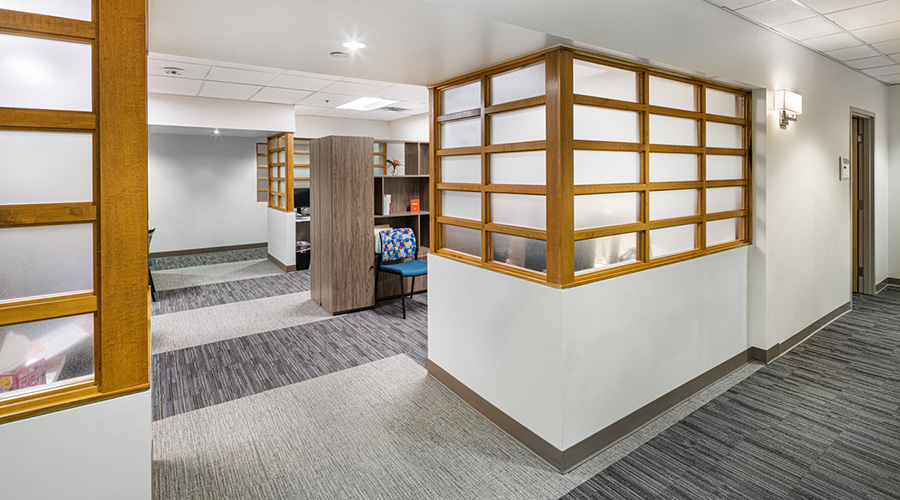Building automation systems (BAS) help streamline and make operations more efficient. HVAC systems are no exception to this, as they can be integrated into these automated systems as well. In this manufacturer roundtable, Healthcare Facilities Today speaks with HVAC manufacturers about what efficiencies a facility manager can expect by pairing HVAC systems with BAS.
What kind of efficiencies can a facility manager expect by pairing HVAC systems with building automation systems (BAS) or similar technologies?
“Facility operators can expect both enhanced performance and maximum comfort with the use of a building automation system. Achieved increases vary by application, but the more precise control provided by a BAS enhances the opportunity for improvement. When, how and where a building system is operating will dictate the energy savings and comfort increases that can be expected.”
— Dennis Stinson, vice president of sales, Fujitsu General America, Inc.
“Humidification systems often feature intelligent controls and the ability to connect with building automation systems, allowing for precise regulation of humidity levels based on real-time conditions. This adaptability ensures optimal performance and supporting broader energy efficiency goals, because the system can dynamically respond to varying environmental factors. Building automation systems give facility managers a holistic view of their systems and a level of control that helps reduce system wear, optimize energy consumption and get early alerts to changes in equipment performance.”
— Jennifer Montville, director of marketing, DriSteem
“Usually, expectations around efficiencies are provided in ranges as each situation is unique. A few examples that come to mind are Demand Control Ventilation (DCV): The BAS can monitor occupancy sensors and CO2 levels to adjust equipment ventilation rates automatically. This ensures adequate fresh air for occupants while minimizing unnecessary energy consumption used for excessive ventilation. Studies by the Department of Energy have shown DCV strategies can yield 20 to 60 percent energy savings in ventilation.
Going back to central plants, optimizing a central plant via the combination of equipment and controls can lead to 10 to 30 percent energy savings according to studies done by ASHRAE and finally, integrating software and equipment systems via platforms that provide fault detection can identify system issues like blocked coils or broken actuators that are wasting energy. Best in class organizations are moving away from depending on their BAS for fault-detection and diagnostics and into cloud-based solutions that offer more scalability and integration (of disparate systems) to become more tactical in identifying and quantifying their opportunities.”
— Brian T. Estill, portfolio director – healthy buildings and sustainability, Johnson Controls
“Pairing HVAC systems with a building automation system (BAS) or similar technologies can bring several efficiencies for facility managers. Here are some key benefits:
- Energy Efficiency: BAS, also known as Energy Management Systems, can optimize HVAC operation by monitoring and adjusting system settings based on real-time data and predefined schedules. This helps to avoid unnecessary energy consumption, reducing operating costs and improving overall energy efficiency.
- Improved Comfort and Indoor Air Quality: A BAS can continuously monitor and control factors like temperature, humidity and air quality. It allows facility managers to maintain optimal conditions in different zones of the building, ensuring occupant comfort and a healthy indoor environment.
- System Performance Optimization: A BAS can monitor the performance of HVAC equipment, such as chillers, boilers and air handlers, and identify inefficiencies or anomalies. Facility managers can use this data to schedule regular maintenance, promptly detect and address issues, and optimize the performance of HVAC systems.
- Remote Access and Control: With a BAS, facility managers can monitor and control HVAC systems remotely, so they respond to alarms, adjust settings and troubleshoot issues without physically being present on-site, saving time and improving operational efficiency.
- Data Analytics and Reporting: Building automation systems collect and analyze data from HVAC systems, providing valuable insights into energy usage patterns, equipment performance, and occupant behavior. Facility managers can utilize this information to identify opportunities for further energy savings, optimize operational strategies, and make data-driven decisions. Using the BAS to monitor critical space conditions, like operating room parameters, allows for more accurate tracking of compliance parameters such as temperature, humidity, air changes and room pressure removing the use of a skilled technician to record the conditions manually.
- Predictive Maintenance: BAS can leverage data from sensors and equipment to detect possible faults or deviations from normal operations. By employing predictive maintenance strategies, facility managers can schedule maintenance activities proactively before major breakdowns occur. This helps to minimize downtime, reduce repair costs and extend the lifespan of HVAC equipment.
- Integration with Other Systems: A BAS can integrate with other building systems such as lighting, security and occupancy sensing systems. This coordinates control and optimizes various building systems, increasing efficiency, improving occupant comfort and streamlining facility management.
Overall, pairing HVAC systems with BAS or similar technologies empowers facility managers to optimize energy consumption, enhance system performance and improve occupant comfort, leading to cost savings, reduced maintenance needs and increased operational efficiency.”
— Christy Fetsch, CEM, LEED AP, healthcare vertical market strategy leader, Trane
Jeff Wardon, Jr. is the assistant editor for the facilities market.

 Code Compliance Isn't Enough for Healthcare Resilience
Code Compliance Isn't Enough for Healthcare Resilience Ribbon Cutting Marks First Phase Completion for New Montefiore Einstein Facility
Ribbon Cutting Marks First Phase Completion for New Montefiore Einstein Facility Brooks Rehabilitation Launches 3 New Major Construction Projects
Brooks Rehabilitation Launches 3 New Major Construction Projects Joint Commission Standards: What Updates Matter Most?
Joint Commission Standards: What Updates Matter Most? Swinerton Completes Construction at Atlanta's Grady Hospital
Swinerton Completes Construction at Atlanta's Grady Hospital